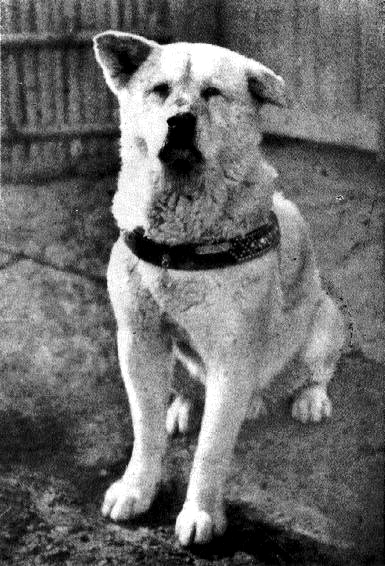Perspektivismus, Visual Perspectivism: 観点主義、遠近法、遠近法主義、パースペクティヴィズム.
案内人:池田光穂
遠近法(絵画)
Perspektivismus, Visual Perspectivism: 観点主義、遠近法、遠近法主義、パースペクティヴィズム.
案内人:池田光穂
■哲学のパースペ
クティヴィズムはこちらです:ニーチェの遠近法/遠近法主義ノート[→オリジナ
ル出典は「人間機械論・再考」]
●絵画=視覚 技法としての「遠近法」-- Perspective (graphical).
| Linear or point-projection
perspective
(from Latin: perspicere 'to see through') is one of two types of
graphical projection perspective in the graphic arts; the other is
parallel projection.[citation needed] Linear perspective is an
approximate representation, generally on a flat surface, of an image as
it is seen by the eye. Perspective drawing is useful for representing a
three-dimensional scene in a two-dimensional medium, like paper. The most characteristic features of linear perspective are that objects appear smaller as their distance from the observer increases, and that they are subject to foreshortening, meaning that an object's dimensions along the line of sight appear shorter than its dimensions across the line of sight. All objects will recede to points in the distance, usually along the horizon line, but also above and below the horizon line depending on the view used. Italian Renaissance painters and architects including Masaccio, Paolo Uccello, Piero della Francesca and Luca Pacioli studied linear perspective, wrote treatises on it, and incorporated it into their artworks. Perspective works by representing the light that passes from a scene through an imaginary rectangle (the picture plane), to the viewer's eye, as if a viewer were looking through a window and painting what is seen directly onto the windowpane. If viewed from the same spot as the windowpane was painted, the painted image would be identical to what was seen through the unpainted window. Each painted object in the scene is thus a flat, scaled down version of the object on the other side of the window.[4] |
直線投影または点投影遠近法(ラテン語:perspicere「見通
す」)は、グラフィックアートにおける2種類の投影遠近法の1つで、もう1つは平行投影である[要出典]
直線投影は、一般に平らな表面上に、目で見たイメージをおおよそ表現するものである。透視図法は、紙のような二次元の媒体で三次元の情景を表現するのに使
われている。 直線遠近法の最も特徴的な点は、観察者からの距離が遠くなるほど物体が小さく見えることと、物体の視線方向の寸法が視線方向の寸法よりも短く見えること、 つまり前近視の影響を受けることである。すべての物体は遠くの点まで後退し、通常は水平線に沿って後退するが、使われる視点によっては水平線の上や下にも 後退する。 イタリア・ルネッサンス期の画家や建築家であるマサッチョ、パオロ・ウッチェロ、ピエロ・デラ・フランチェスカ、ルカ・パチョーリらは、線遠近法を研究 し、論文を書き、作品に取り入れた。 透視図法の仕組みは、あたかも窓から見えるものをそのまま窓ガラスに描くように、風景から想像上の長方形(画面)を通って、見る人の目に入る光を表現する ことである。窓ガラスに描かれたものと同じ場所から見れば、描かれたものは描かれていない窓から見えるものと同じである。このように,描かれた物体は,窓 の向こう側にある物体の縮小版であり,平面である[4]. |
| Early history The floor tiles in Lorenzetti's Annunciation (1344) strongly anticipate modern perspective. The earliest art paintings and drawings typically sized many objects and characters hierarchically according to their spiritual or thematic importance, not their distance from the viewer, and did not use foreshortening. The most important figures are often shown as the highest in a composition, also from hieratic motives, leading to the so-called "vertical perspective", common in the art of Ancient Egypt, where a group of "nearer" figures are shown below the larger figure or figures; simple overlapping was also employed to relate distance.[7] Additionally, oblique foreshortening of round elements like shields and wheels is evident in Ancient Greek red-figure pottery.[8] Systematic attempts to evolve a system of perspective are usually considered to have begun around the fifth century BC in the art of ancient Greece, as part of a developing interest in illusionism allied to theatrical scenery. This was detailed within Aristotle's Poetics as skenographia: using flat panels on a stage to give the illusion of depth.[9] The philosophers Anaxagoras and Democritus worked out geometric theories of perspective for use with skenographia. Alcibiades had paintings in his house designed using skenographia, so this art was not confined merely to the stage. Euclid in his Optics (c. 300 BC) argues correctly that the perceived size of an object is not related to its distance from the eye by a simple proportion.[10] In the first-century BC frescoes of the Villa of P. Fannius Synistor, multiple vanishing points are used in a systematic but not fully consistent manner.[6] Chinese artists made use of oblique projection from the first or second century until the 18th century. It is not certain how they came to use the technique; Dubery and Willats (1983) speculate that the Chinese acquired the technique from India, which acquired it from Ancient Rome,[11] while others credit it as an indigenous invention of Ancient China.[12][13][14] Oblique projection is also seen in Japanese art, such as in the Ukiyo-e paintings of Torii Kiyonaga (1752–1815).[11][a] By the later periods of antiquity, artists, especially those in less popular traditions, were well aware that distant objects could be shown smaller than those close at hand for increased realism, but whether this convention was actually used in a work depended on many factors. Some of the paintings found in the ruins of Pompeii show a remarkable realism and perspective for their time.[15] It has been claimed that comprehensive systems of perspective were evolved in antiquity, but most scholars do not accept this. Hardly any of the many works where such a system would have been used have survived. A passage in Philostratus suggests that classical artists and theorists thought in terms of "circles" at equal distance from the viewer, like a classical semi-circular theatre seen from the stage.[16] The roof beams in rooms in the Vatican Virgil, from about 400 AD, are shown converging, more or less, on a common vanishing point, but this is not systematically related to the rest of the composition.[17] Medieval artists in Europe, like those in the Islamic world and China, were aware of the general principle of varying the relative size of elements according to distance, but even more than classical art were perfectly ready to override it for other reasons. Buildings were often shown obliquely according to a particular convention. The use and sophistication of attempts to convey distance increased steadily during the period, but without a basis in a systematic theory. Byzantine art was also aware of these principles, but also used the reverse perspective convention for the setting of principal figures. Ambrogio Lorenzetti painted a floor with convergent lines in his Presentation at the Temple (1342), though the rest of the painting lacks perspective elements.[18] |
初期の歴史 ロレンツェッティの《受胎告知》(1344年)の床タイルは、現代の遠近法を強く意識したものである。 初期の絵画やデッサンでは、多くの物体や人物を、鑑賞者からの距離ではなく、精神的あるいはテーマ的な重要性に応じて階層的に配置し、前方縮小を使わな かった。また、最も重要な人物は構図の中で最も高く描かれることが多く、これも階層的な動機から、古代エジプトの美術によく見られる、いわゆる「垂直遠近 法」につながるもので、「近い」人物群が大きな人物または人物の下に示されている。 遠近法を発展させる系統的な試みは、通常、古代ギリシャの芸術において紀元前5世紀頃に始まったと考えられており、演劇の風景と結びついた幻想主義への関 心の高まりの一部であったとされている。哲学者のアナクサゴラスとデモクリトスは、スケノグラフィアで使われる遠近法の幾何学的な理論に取り組んだ [9]。アルキビアデスはスケノグラフィアでデザインされた絵画を自宅に飾っており、この芸術は舞台だけにとどまらなかった。ユークリッドは『光学』(紀 元前300年頃)の中で、知覚される物体の大きさは単純な比例によって目からの距離に関係しないことを正しく論じている[10]。紀元前1世紀のP. Fannius Synistorのヴィラのフレスコ画では、複数の消失点が系統的に使われるが、完全な一貫性はない[6]。 中国の芸術家は、1世紀か2世紀から18世紀まで斜投影を使われていた。Dubery and Willats (1983) は、中国人がインドからこの技術を習得したと推測しているが[11]、古代ローマから習得したとも、古代中国固有の発明とする者もいる[12][13] [14]。 鳥居清長 (1752-1815) の浮世絵など日本美術にも斜投影は使われている[11][a]。 古代後期には、芸術家、特に人気のない伝統的な芸術家は、遠くのものを手近なものよりも小さく表示して写実性を高めることをよく認識していたが、この慣習 が実際に作品に使われたかどうかは、多くの要因に左右された。ポンペイの遺跡から発見されたいくつかの絵画は、当時としては驚くべき写実性と遠近法を示し ている[15]。古代において包括的な遠近法が発展したと主張されているが、ほとんどの学者はこれを認めない。そのようなシステムが使われたであろう多く の作品のうち、現存しているものはほとんどない。フィロストラトスの一節は、古典的な芸術家や理論家が、舞台から見た古典的な半円形の劇場のように、見る 人から等しい距離にある「円」の観点から考えていたことを示唆している[16]。紀元400年頃のヴァチカン王国の部屋の屋根梁は、共通の消失点に多かれ 少なかれ収束して示されているが、これは構成の残りの部分に体系的に関連しているわけではない[17]。 中世ヨーロッパの芸術家は、イスラム世界や中国の芸術家と同様に、距離によって要素の相対的な大きさを変えるという一般原則を認識していたが、古典芸術以 上に、別の理由でそれを覆す用意があった。建物はしばしば特定の規則に従って斜めに描かれた。距離を表現する試みは、この時代、着実に使われ、洗練されて いったが、体系的な理論に基づくものではなかった。ビザンティン美術もこうした原則を意識していたが、主要な人物の配置に逆遠近法を使った。アンブロジ オ・ロレンツェッティは『神殿の提示』(1342年)の中で、床を収束線で描いているが、それ以外の部分は遠近法の要素を欠いている[18]。 |
| Renaissance It is generally accepted that Filippo Brunelleschi conducted a series of experiments between 1415 and 1420, which included making drawings of various Florentine buildings in correct perspective.[20] According to Vasari and Antonio Manetti, in about 1420, Brunelleschi demonstrated his discovery by having people look through a hole in the back of a painting he had made. Through it, they would see a building such as the Florence Baptistery. When Brunelleschi lifted a mirror in front of the viewer, it reflected his painting of the buildings which had been seen previously, so that the vanishing point was centered from the perspective of the participant.[21] Brunelleschi applied the new system of perspective to his paintings around 1425.[22] This scenario is indicative, but faces several problems. First of all, nothing can be said for certain about the perspective of the baptistery of San Giovanni, because Brunelleschi's panel is lost. Second, no other perspective painting by Brunelleschi is known. Third, in the account written by Antonio di Tuccio Manetti at the end of the 15th century on Brunelleschi's panel, there is not a single occurrence of the word experiment. Fourth, the conditions listed by Antonio di Tuccio Manetti are contradictory with each other. For example, the description of the eyepiece sets a visual field of 15° much narrower than the visual field resulting from the urban landscape described.[23] This scenario is still debated, however, because Brunelleschi's tavoletta is lost, which does not allow a direct assessment of the correctness of his perspective construction, and because the conditions listed by Antonio di Tuccio Manetti in his Vita di Ser Brunellesco are inconsistent.[24] Soon after Brunelleschi's demonstrations, nearly every artist in Florence and in Italy used geometrical perspective in their paintings and sculpture,[25] notably Donatello, Masaccio, Lorenzo Ghiberti, Masolino da Panicale, Paolo Uccello, and Filippo Lippi. Not only was perspective a way of showing depth, it was also a new method of creating a composition. Visual art could now depict a single, unified scene, rather than a combination of several. Early examples include Masolino's St. Peter Healing a Cripple and the Raising of Tabitha (c. 1423), Donatello's The Feast of Herod (c. 1427), as well as Ghiberti's Jacob and Esau and other panels from the east doors of the Florence Baptistery.[26] Masaccio (d. 1428) achieved an illusionistic effect by placing the vanishing point at the viewer's eye level in his Holy Trinity (c. 1427),[27] and in The Tribute Money, it is placed behind the face of Jesus.[28][b] In the late 15th century, Melozzo da Forlì first applied the technique of foreshortening (in Rome, Loreto, Forlì and others).[30] This overall story is based on qualitative judgments, and would need to be faced against the material evaluations that have been conducted on Renaissance perspective paintings. Apart from the paintings of Piero della Francesca, which are a model of the genre, the majority of 15th century works show serious errors in their geometric construction. This is true of Masaccio's Trinity fresco[31] and of many works, including those by renowned artists like Leonardo da Vinci.[32] As shown by the quick proliferation of accurate perspective paintings in Florence, Brunelleschi likely understood (with help from his friend the mathematician Toscanelli),[33] but did not publish, the mathematics behind perspective. Decades later, his friend Leon Battista Alberti wrote De pictura (c. 1435), a treatise on proper methods of showing distance in painting. Alberti's primary breakthrough was not to show the mathematics in terms of conical projections, as it actually appears to the eye. Instead, he formulated the theory based on planar projections, or how the rays of light, passing from the viewer's eye to the landscape, would strike the picture plane (the painting). He was then able to calculate the apparent height of a distant object using two similar triangles. The mathematics behind similar triangles is relatively simple, having been long ago formulated by Euclid.[c] Alberti was also trained in the science of optics through the school of Padua and under the influence of Biagio Pelacani da Parma who studied Alhazen's Book of Optics.[34] This book, translated around 1200 into Latin, had laid the mathematical foundation for perspective in Europe.[35] Piero della Francesca elaborated on De pictura in his De Prospectiva pingendi in the 1470s, making many references to Euclid.[36] Alberti had limited himself to figures on the ground plane and giving an overall basis for perspective. Della Francesca fleshed it out, explicitly covering solids in any area of the picture plane. Della Francesca also started the now common practice of using illustrated figures to explain the mathematical concepts, making his treatise easier to understand than Alberti's. Della Francesca was also the first to accurately draw the Platonic solids as they would appear in perspective. Luca Pacioli's 1509 Divina proportione (Divine Proportion), illustrated by Leonardo da Vinci, summarizes the use of perspective in painting, including much of Della Francesca's treatise.[37] Leonardo applied one-point perspective as well as shallow focus to some of his works.[38] Two-point perspective was demonstrated as early as 1525 by Albrecht Dürer, who studied perspective by reading Piero and Pacioli's works, in his Unterweisung der messung ("Instruction of the measurement").[39] |
ルネサンス フィリッポ・ブルネレスキが1415年から1420年にかけ て、フィレンツェの様々な建築物を正しい遠近法で描いたデッサンを含む一連の実験を行ったと一般に考えられている[20]。 ヴァザーリやアントニオ・マネッティによれば、ブルネレスキは1420年頃、自分の描いた絵の裏側に開いた穴から人々を覗かせて、この発見の成果を見せた という。その穴から、フィレンツェの洗礼堂のような建物が見えるというのだ。ブルネレスキが鑑賞者の前で鏡を持ち上げると、それまで見ていた建物の絵が映 り、消失点が参加者の視点から中央に来るようになった[21]。ブルネレスキはこの新しい遠近法のシステムを1425年頃に自分の絵に適用している [22]。 このシナリオは示唆的ではあるが、いくつかの問題に直面している。まず、サン・ジョヴァンニの洗礼堂の遠近法については、ブルネレスキのパネルが失われて いるため、確かなことは何も言えない。第二に、ブルネレスキによる透視図が他に知られていないこと。第三に、15世紀末にアントニオ・ディ・トゥッチョ・ マネッティが書いたブルネレスキのパネルに関する記述の中に、実験という言葉が一度も出てこないこと。第四に、アントニオ・ディ・トゥッチョ・マネッティ の挙げた条件は、互いに矛盾している。例えば、接眼レンズの記述では、15°の視野が、記述された都市景観から得られる視野よりもはるかに狭く設定されて いる[23]。 しかし、ブルネレスキのタヴォレッタが失われており、遠近法の構築の正しさを直接評価できないこと、アントニオ・ディ・トゥッチョ・マネッティが『ブルネ レスコ卿記』で挙げた条件に矛盾があることから、このシナリオはいまだに議論されている[24]。 ブルネレスキの実演の後すぐに、フィレンツェとイタリアのほぼすべての芸術家が幾何学的遠近法を絵画や彫刻に使った[25]。特にドナテッロ、マサッ チョ、ロレンツォ・ギベルティ、マソリーノ・ダ・パニカーレ、パオロ・ウッチェロ、フィリッポ・リッピが有名だ。遠近法は、奥行きを表現する方法であるだ けでなく、構図を作るための新しい方法でもあった。遠近法は奥行きを表現するだけでなく、構図を作る新しい手法でもあった。マソリーノ『障碍者を癒す聖ペ テロ』(1423年頃)、ドナテッロ『ヘロデの饗宴』(1427年頃)、ギベルティ『ヤコブとエサウ』などのフィレンツェ洗礼堂の東扉などがその例である [26]。1428)は『聖三位一体』(c. 1427)において消失点を鑑賞者の目の高さに置くことで錯視的効果を得ており[27]、『貢納金』ではイエスの顔の背後に置かれている[28][b] 15世紀末、メロッツォ・ダ・フォルリは初めて伏字の手法を適用した(ローマ、ロレート、フォルリ他)[30]。 この全体的な話は定性的な判断に基づくものであり、ルネサンス期の透視図法絵画について行われてきた資料的な評価と向き合う必要があろう。このジャンルの モデルとなったピエロ・デラ・フランチェスカの絵画は別として、15世紀の作品の大半は幾何学的な構成に重大な誤りが見られる。マサッチョの三位一体フレ スコ画[31]や、レオナルド・ダ・ヴィンチなど著名な芸術家の作品を含む多くの作品がそうである[32]。 フィレンツェで正確な遠近法を用いた絵画が急速に普及したことからもわかるように、ブルネレスキは友人の数学者トスカネッリの助けを借りて遠近法の背後に ある数学を理解していたと思われるが[33]、発表することはなかった。その数十年後、友人のレオン・バッティスタ・アルベルティが、絵画における距離の 適切な表現方法に関する論文『デ・ピクトゥーラ』(1435年頃)を著している。アルベルティの画期的な点は、実際に目に見えるように、数学を円錐形の投 影で示すことではなかった。その代わりに、彼は平面投影、つまり、鑑賞者の目から風景に向かう光線がどのように画面(絵画)に当たるかをもとに理論を構築 した。そして、2つの相似三角形を使って、遠くの物体の見かけ上の高さを計算することができたのです。アルベルティは、パドヴァの学校と、アルハーゼンの 『光学書』を研究したビアージョ・ペラカーニ・ダ・パルマの影響を受けて、光学の科学も学んでいた[34]。この本は、1200年頃にラテン語に翻訳され て、ヨーロッパにおける遠近法の数学的基礎を築いていた[35]。 ピエロ・デラ・フランチェスカは1470年代に『De Prospectiva pingendi』で『De pictura』を詳しく説明し、ユークリッドに多くの言及をしていた[36]。アルベルティは地平面上の図形に限定し、遠近法の全体的な基礎を与えてい た。デッラ・フランチェスカはそれを発展させ、絵の平面上のどの領域にもある立体を明示的にカバーしたのである。また、現在では一般的となっている、数学 的概念を説明するために図解を使うことを始め、アルベルティよりも理解しやすい論文となった。また、プラトン立体を遠近法で正確に描いたのもデラ・フラン チェスカが最初である。ルカ・パチョーリの1509年の『神の比例』(レオナルド・ダ・ヴィンチによる挿絵)は、デラ・フランチェスカの論文の多くを含む 絵画における遠近法の使用を要約している[37]。 二点透視図法は、ピエロやパチョーリの著作を読んで遠近法を研究したアルブレヒト・デューラーが、1525年に早くも『測定の指南』 (Unterweisung der messung)で実証している[39]。 |
| Limitations Perspective images are calculated assuming a particular vanishing point. In order for the resulting image to appear identical to the original scene, a viewer of the perspective must view the image from the exact vantage point used in the calculations relative to the image. This cancels out what would appear to be distortions in the image when viewed from a different point. These apparent distortions are more pronounced away from the center of the image as the angle between a projected ray (from the scene to the eye) becomes more acute relative to the picture plane. In practice, unless the viewer chooses an extreme angle, like looking at it from the bottom corner of the window, the perspective normally looks more or less correct. This is referred to as "Zeeman's Paradox".[40] It has been suggested that a drawing in perspective still seems to be in perspective at other spots because we still perceive it as a drawing, because it lacks depth of field cues.[41] |
限界 パースペクティブ画像は、特定の消失点を想定して計算されている。その ため、元の風景と同じように見えるためには、遠近法を見る人は、計算で使われた正確な位置から画像を見ていなければならない。このため、別 の場所から見ると、画 像の歪みが打ち消されて見える。この歪みは、投影された光線(シーンから目に向かう光線)が画面に対して鋭角になるにつれて、画像の中心から離れるほど顕 著になる。実際には、窓の下隅から見るような極端な角度を選ばない限り、通常、遠近感はほぼ正しく見える。これは「ゼーマンのパラドックス」と呼ばれてい る[40]。被写界深度の手がかりを欠いているため、遠近法の絵が他の場所ではまだ遠近法に見えるのは、我々がまだそれを絵として知覚しているからだと示 唆されている[41]。 |
| Anamorphosis Camera angle Cutaway drawing Perspective control Perspective-taking Trompe-l'œil Uki-e Zograscope |
|
| https://en.wikipedia.org/wiki/Perspective_(graphical) |
https://www.deepl.com/ja/translator |
| Painting and experience in fifteenth century Italy : a primer in the
social history of pictorial style / Michael Baxandall. Oxford
University Press , 1988 This book is both an introduction to fifteenth-century Italian painting, and a primer in how to read social history out of the style of pictures. It examines the commercial practice of the early Renaissance picture, trade in contracts, letters, and accounts; and it explains how the visual skills and habits evolved in the daily life of any society enter into its painters' style. Renaissance painting is related for instance to experience of such activities as preaching, dancing, and gauging barrels. This second edition contains an appendix, the original Latin and Italian texts referred to throughout the book, giving the student access to all the relevant, authentic sources. Part 1 Conditions of trade: Introduction contracts and the client's control art and matter the value of skill perception of skill. Part 2 The period eye: Relative perception pictures and knowledge the cognitive style the function of images "Istoria" the body and its language figure patterns the value of colours volumes intervals and proportions the moral eye. Part 3 Pictures and categories: Words and pictures Giovanni Santi's twenty-five painters Cristoforo Landino categories, including nature, relief, purity, ease, perspective, grace, ornateness, variety, composition, colouring, design, difficulty, foreshortening, promptness, blitheness, devotion conclusion. Texts and references. Index. |
ルネサンス絵画の社会史 / マイケル・バクサンドール著 ; 篠塚二三男 [ほか] 訳, 平凡社 , 1989 本書は、15世紀イタリア絵画の入門書であると同時に、絵画のスタイルから社会史を読み解くための入門書でもある。本書は、ルネサンス初期の絵画の商業的 実践、契約書、手紙、帳簿などの取引について考察し、社会の日常生活で発達した視覚技術や習慣が、画家のスタイルにどのように関わっているかを説明してい る。ルネサンス絵画は、例えば、説教、ダンス、樽の計量といった活動の経験と関連している。第2版では、付録としてラテン語とイタリア語の原典を収録して おり、学習者は関連する本物の資料すべてにアクセスすることができる。 |
リンク
文献
その他の情報

Do not paste, but [re]think this message for all undergraduate students!!!




The last photo ever taken of Hachiko, the dog who waited for 9 years
after the death of his master outside the train station every morning
until he himself passed away in November 10, 1935.